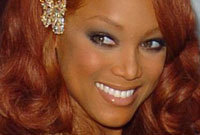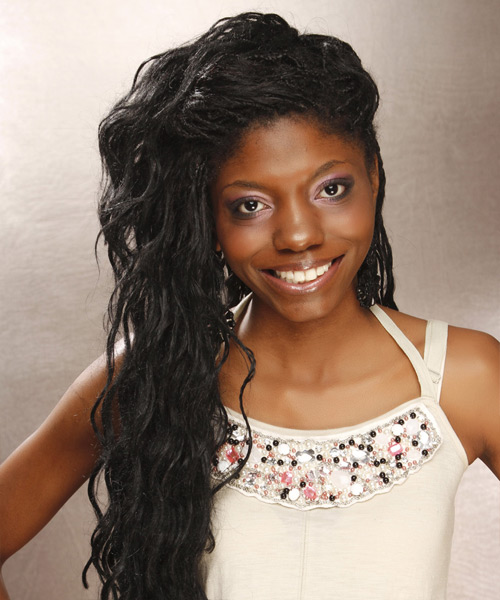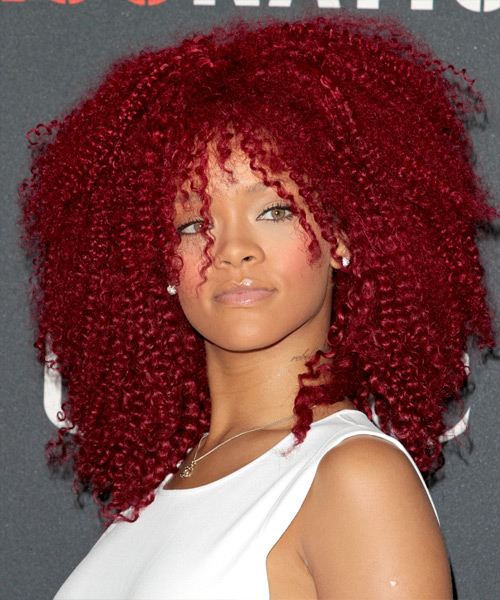A hair weave is a hair extension that is weaved into existing natural hair. It's a popular hairstyling method especially among African American women because it's an easy and effective way to try a different look without having to use harsh chemicals and damage the hair.
For Tyra Banks, and other African American women, hair weaves are a way of trying a straight hairstyle without the damaging effect of relaxer and other harsh chemicals. Tyra claims also that she started wearing a weave in an attempt to prevent damaging her natural hair (through continual styling changes) when she was a model. For a humorous look at the role hair weaves play in African American culture take a look at the film by Chris Rock: Good Hair.
The first thing you should think about if you're considering getting a hair weave is the type of weave- in other words, will you get synthetic or natural? Synthetic weaves are good for braided hair styles but they don't have the same free-flowing volume as natural hair. Synthetic weaves can look a little fake and limp and some people find they irritate the skin and tangle a little more. Hair straighteners shouldn't be used on synthetic hair either. Synthetic weaves lack the body and bounce of natural hair.
There are several methods of adding a hair weave to natural hair and they each have their advantages and disadvantages. Bonding involves gluing tracks of hair to your roots and it lasts only a couple of weeks. Some people have allergic reactions to the glue, however, and damage can sometimes be caused removing the weave. Tracking involves braiding the natural hair, sewing down the braids, and then attaching the extensions to the braids. This method lasts a bit longer: up to two months. Fusion is the most versatile and realistic method. Extensions are glued to individual strands of hair. It looks natural and you can style your hair as if it were natural, but it's expensive. Netting involves adding hair weaves to a breathable net-like surface that sits above your braided hair. This method is quite versatile and can last up to three months.
A quick weave, as the name suggests, is a quicker way to achieve a similar effect as the methods above. Instead of braiding the natural hair it's flattened and made slick with gel and then the hair weaves are attached to the flat surface. When the hair has dried tracks are applied with an adhesive, and after the glue has set the hair is styled as usual. Talk to your hairstylist about a quick weave (and make sure they've done one before too).
If you decide to go ahead and try a weave it's important that you employ the correct hair care routine. Here are some things to bear in mind:
- Since weave hair is not attached to the scalp it will become drier and more brittle than your natural hair. You need to keep it moisturized with a deep conditioner and gentle hair care products.
- Be careful using heat appliances since your weave's dryness means it will be more prone to heat damage. Always use heat protection products.
- Weaves that are attached to braids can make it difficult to wash your roots. Since this is the case you should always wash your natural hair and your scalp too.
- If you choose the netting method of attaching your hair weave then make sure your hair is totally dry after you wash it, otherwise mildew may grow.
- Be aware that the extra weight on the scalp caused by long and heavy extensions can cause some long-term damage to your natural hair. Consult a hairstylist for advice.
- Weaves can be fragile so consider wearing a silk scarf when you sleep and be extra careful when... getting intimate.
Weaves are popular hairstyles for all women and African American women in particular because- aside from the expense and the time involved- they are an effective and easy way of changing the hair without the damage caused by chemicals and continual restyling. There's some great styles to choose from, as Tyra Banks proves time and time again, and talk to your hairstylist about trying one yourself.




